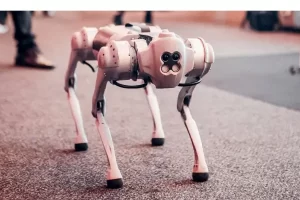In recent years, the field of prosthetics has undergone a revolutionary transformation, thanks in large part to advancements in technology. Traditional prosthetics, while functional, often fell short in replicating the natural movement and sensory feedback of human limbs. Enter robotic prosthetics—a new era where engineering and medicine converge to create devices that not only restore mobility but also enhance the quality of life for amputees. This article delves into the intricacies of robotic prosthetics, exploring their mechanics, benefits, challenges, and future prospects.
Understanding Robotic Prosthetics
Robotic prosthetics refer to artificial limbs that incorporate sophisticated technology, allowing them to mimic the functions of natural limbs more closely than ever before. Unlike traditional prosthetics, which may rely on basic mechanical functions, robotic prosthetics utilize motors, sensors, and algorithms to enable fluid movement and responsive actions.
Differences Between Traditional and Robotic Prosthetics
Traditional prosthetics often rely on passive designs, which means they do not move without the user’s manual input. For example, a basic prosthetic leg might simply provide a physical structure for weight-bearing. In contrast, robotic prosthetics are dynamic, responding to the user’s movements and even adapting to different terrains. This difference fundamentally changes how users interact with their environment.
How Robotic Prosthetics Work
Robotic prosthetics are equipped with sensors that detect muscle signals, joint angles, and environmental cues. When a user thinks about moving their limb, the sensors pick up on these signals and translate them into movement. This process is often facilitated by advanced algorithms that can learn and adapt over time, enhancing the device’s responsiveness and user-friendliness.
Key Technologies Behind Robotic Prosthetics
The effectiveness of robotic prosthetics is heavily reliant on cutting-edge technologies that enhance their functionality and user experience.
Sensors and Feedback Systems
One of the most significant advancements in robotic prosthetics is the integration of sensors that provide real-time feedback. These sensors can detect pressure, temperature, and even the surrounding environment, allowing the prosthetic to make adjustments on the fly. For example, a prosthetic foot can adjust its stiffness based on the surface it encounters, whether it be soft sand or hard pavement.
Advanced Materials and Lightweight Designs
The materials used in robotic prosthetics have evolved dramatically. Modern prosthetics utilize lightweight, durable materials such as carbon fiber and advanced plastics, reducing the overall weight without sacrificing strength. This innovation is crucial for user comfort and mobility, as a lighter prosthetic is easier to control and requires less energy to operate.
Artificial Intelligence in Robotic Prosthetics
Artificial intelligence (AI) plays a pivotal role in the development of robotic prosthetics. AI algorithms can analyze data from the sensors, allowing the prosthetic to learn from the user’s movements over time. This machine learning capability enables the device to anticipate the user’s needs, making it easier to perform complex tasks such as walking, running, or navigating obstacles.
Benefits of Robotic Prosthetics
The advantages of robotic prosthetics extend beyond mere functionality, profoundly impacting the lives of users.
Enhanced Mobility and Functionality
One of the most significant benefits of robotic prosthetics is their ability to enhance mobility. Users can perform activities that were once challenging or impossible, such as climbing stairs or walking on uneven surfaces. This enhanced functionality translates to greater independence and a more active lifestyle.
Improved User Comfort and Adaptation
Robotic prosthetics are designed with user comfort in mind. With features like customizable fittings and adaptive controls, these devices can be tailored to each individual’s needs. Moreover, the ability to adjust to different walking patterns or terrain types makes the experience much more intuitive, reducing the mental burden on users.
Greater Independence for Users
For many amputees, regaining independence is a primary goal. Robotic prosthetics empower users by enabling them to perform daily activities without assistance. This newfound freedom not only boosts physical capability but also enhances mental well-being, as users can engage more fully in social and professional settings.
Challenges and Limitations
Despite the incredible advancements, the field of robotic prosthetics still faces several challenges.
Cost and Accessibility Issues
One of the most significant barriers to the widespread adoption of robotic prosthetics is cost. Advanced devices can range from tens of thousands to over a hundred thousand dollars, making them inaccessible to many individuals who could benefit from them. Insurance coverage often falls short, leaving users to bear the financial burden.
Technical Challenges and Maintenance
Robotic prosthetics are complex machines that require regular maintenance and occasional repairs. Users must be educated about the proper care of their devices, which can be a barrier for some. Additionally, technical malfunctions can occur, leading to downtime and frustration for the user.
User Adaptation and Learning Curve
While robotic prosthetics aim to mimic natural movement, there is often a learning curve for users. It can take time to adapt to the device, and some users may experience frustration or discomfort during the adjustment period. Ongoing support and training are crucial to help users overcome these challenges.
Case Studies and Success Stories
Real-life experiences provide compelling evidence of the transformative power of robotic prosthetics.
Real-Life Examples of Users
Consider the story of Sarah, an athlete who lost her leg in an accident. With the help of a state-of-the-art robotic prosthetic, she not only returned to running but also competed in marathons. Sarah’s story is just one of many that highlight how these devices can change lives.
Innovations from Leading Companies and Researchers
Leading companies such as Össur, Touch Bionics, and prosthetic labs at universities are pushing the boundaries of what’s possible. Innovations like bionic arms that can sense touch and advanced robotic legs that can navigate stairs represent the forefront of this technology.
Testimonials Highlighting Improvements in Quality of Life
Many users report significant improvements in their overall quality of life after transitioning to robotic prosthetics. Testimonials often highlight feelings of empowerment, increased social interaction, and the ability to pursue hobbies and interests that were previously difficult or impossible.
The Future of Robotic Prosthetics
The future of robotic prosthetics looks promising, with ongoing research and technological advancements poised to enhance the field further.
Trends and Predictions for Upcoming Technologies
Emerging trends suggest that future robotic prosthetics will become even more intuitive and responsive. Developments in brain-machine interfaces, for instance, could allow users to control their prosthetics through thought alone, eliminating the need for sensors and making the devices more seamless.
The Role of Research and Development
Ongoing research in robotics, neuroscience, and materials science will continue to drive innovation. Collaborative efforts between universities, tech companies, and healthcare providers are essential to ensure that advancements translate into accessible solutions for users.
Potential Impact on Rehabilitation and Healthcare
As robotic prosthetics evolve, they have the potential to revolutionize rehabilitation practices. Personalized rehabilitation programs that integrate robotic prosthetics could lead to faster recovery times and better outcomes for amputees.
Conclusion
Robotic prosthetics represent a significant leap forward in the field of assistive technology. They not only restore mobility but also empower individuals to reclaim their lives, fostering independence and enhancing overall well-being. As technology continues to advance, we can expect even more innovative solutions that will make robotic prosthetics more accessible and effective. The journey towards inclusivity and improved quality of life for amputees is just beginning, and every step forward is a testament to human ingenuity and resilience.
Additional Resources
For readers interested in learning more about robotic prosthetics, the following resources may be helpful:
- Research studies published in journals such as “The Journal of Prosthetics and Orthotics”
- Organizations like the Amputee Coalition and the Prosthetic Foundation
- Online communities and forums for amputees and prosthetic users




